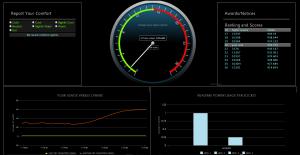
The Power of “Plug and Play”: Unlocking Strategies for Energy-Efficiency in Buildings
MOUNTAIN VIEW, CALIFORNIA, UNITED STATES, June 21, 2024 /EINPresswire.com/ -- Buildings play a key role in mitigating climate change – they emit more than a third of the CO2 worldwide and are expected to double in floor size by 2060 [UNEP]. Consequently, 28 countries including the United States set a specific goal for "near-zero emission and resilient buildings by 2030" at COP28, the United Nations Climate Change Conference for 2023. Meeting this goal requires enhancing energy efficiency not only by lowering HVAC and lighting consumption but also by managing plug loads [ACEEE].
To that end, a groundbreaking study by researchers from Carnegie Mellon University and NASA Ames Research Center offers vital insights into managing occupant plug load in commercial buildings. Pioneered by Dr. Chaitanya Poolla et al., the study presents innovative strategies to reduce energy consumption through advanced demand response techniques and occupant behavior modifications. The researchers conducted meticulously designed experiments to examine the effect of real-time visual feedback and monetary incentives on occupant plug load energy consumption in commercial buildings.
Examining the effect of interventions, Dr. Poolla and team noted that implementing a dashboard displaying real-time energy consumption reduced the plug load energy usage by 9.52% within the government office setting and by 21.61% within the university environment. When combined with variable monetary incentives, the visual feedback resulted in an average reduction of 24.22% within the university environment. These results were found to be statistically significant, and the original findings are published in the top-tier scientific journal, Sustainable Cities and Society.
Unlike past works, the authors performed a detailed statistical characterization of the observed data, including the development of time-series models to predict plug load savings under the effect of interventions. Given the uncertainties associated with human decision-making, these models were found to be 75-80% accurate. The research highlights the efficacy of occupant-in-the-loop control architectures in commercial buildings. In particular, the combination of technology and human behavior to optimize energy efficiency predictably is significant. "Engaging occupants effectively through feedback and incentives can not only motivate significant energy savings but also generate awareness about inefficient devices and energy hogs," said Dr. Poolla, the lead author of the study.
The significance of this research lies in decentralizing building demand response strategies, which are crucial for managing electricity demand and ensuring grid stability. Such a decentralized paradigm empowers occupants to undertake actionable measures to enhance energy efficiency in buildings and mitigate climate change, one plug at a time.
For more information, please refer to the peer-reviewed publication and corresponding author details below:
Poolla, Chaitanya, Abraham K. Ishihara, Dan Liddell, Rodney Martin, and Steven Rosenberg. "Occupant plugload management for demand response in commercial buildings: Field experimentation and statistical characterization." Sustainable Cities and Society 84 (2022): 103984.
Dr. Chaitanya Poolla
Carnegie Mellon University
cpoolla@alumni.cmu.edu
Visit us on social media:
X
LinkedIn
EIN Presswire does not exercise editorial control over third-party content provided, uploaded, published, or distributed by users of EIN Presswire. We are a distributor, not a publisher, of 3rd party content. Such content may contain the views, opinions, statements, offers, and other material of the respective users, suppliers, participants, or authors.


